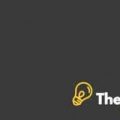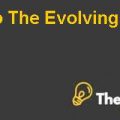
Introduction
Telemedicine is an umbrella term which incorporates discussions regarding all the medical activity that occurs with an element of distance between the medical provider and the patient. Telemedicine has been practiced for hundreds of years by means of letters, but with an advancement of Information and Communication Technology, there has been a manifold increase in the use of telemedicine as a tool for delivering medical treatment. Telemedicine not only includes the real time consultation between patient and expert, but also has the element of obtaining medical advices on prerecorded medical data such as in the case of ‘Tele-Radiology’ or ‘Tele-Pathology’.
A more sophisticated model includes extensive provisions of health care benefits to the under-privileged people. These interventions usually are taken in the form of welfare projects involving substantial investment, coordination and planning. Shawn Farrell, Executive Director of the Partners TeleStroke program, is very interested in telemedicine and is actively recruiting additional practitioners based on the success of Falmouth Hospital on Cape Cod. Shawn Farrell is not a medical doctor yet he is committed to the ability of TeleStroke to save patients’ lives and speed the recovery process for stroke victims. Yet, he is currently experiencing hesitation on behalf of his staff due to the perceived additional time requirements of TeleStroke.
Many practitioners believe there are not enough hours in the day to continue working as they are and incorporating TeleStroke into their interactions and treatment plans for stroke patients. Shawn Farrell has successfully implemented TeleStroke in such a way that the program is financially sustainable; yet, he has been unable to convince key practitioners that TeleStroke may actually increase the amount of time available to them for their patients and other professional responsibilities.
It is essential for medical professionals keep track and organize their patients' medical records. Keeping this in- formation is not an easy task, especially with a voluminous number of records and other documents that have to be filed, usually in rows of labeled folders in file cabinets. In the Philippines, methods in record keeping systems of medical information have not been modernized despite the developments in technology readily available in the market.
The absence in automated electronic medical record keeping is apparent more particularly in the field of pediatrics. Aim Telemedicine is composed of the Greek word τελε (tele) meaning 'far' or 'at a distance' and the word 'medicine'. Generally, it is referred to as the use of telecommunications to provide medical information and efficiency in delivering health services to remote patients. It may be as simple as two health professionals discussing a case over the telephone, or as sophisticated as using satellite technology to broadcast a consultation between providers at facilities in two countries, using videoconferencing equipment or robotic technology.
The rise in the use of mobile phones coupled with the immense developments in wireless technology has become an essential part of different domains especially in the field of medicine. Recent mobile technologies like G data services can allow real-time voice and video conferencing, which can provide a number of benefits in the medical field. This paved way to a new technology called Mobile Telemedicine.
Developing a mobile telemedicine infrastructure could help improve the traditional record keeping system of medical professionals. The system provides efficiency in recording medical data with the use of advanced wireless technologies and web services. Portable gadgets such as PDAs, laptops and mobile phones synchronized with other peripheral attachments are utilized and connect to servers to achieve real-time communication with medical professionals. This feature becomes of circumstantialimportance when emergencies and the need for immediate care and consultation arise.
OBJECTIVE
One sixth of humanity accounting for million people lives in India. India is generally considered to be a developing country and certainly there is considerable scope for improving the per capita income and the average standard of life. India however is a paradox. We now produce and launch our own satellites. Information is being gathered regarding the feasibility of launching a HEALTHSAT - a satellite exclusively for purposes of health care. There has been an unprecedented growth and development in Information Technology. Satellite transmission, fiber optic cables, increasing bandwidth, fall in computer prices, licensing of private internet service providers, internet through' cable, etc. have become the buzz words even in suburban and rural India..............................................
This is just a sample partial work. Please place the order on the website to get your own originally done Case Solution













